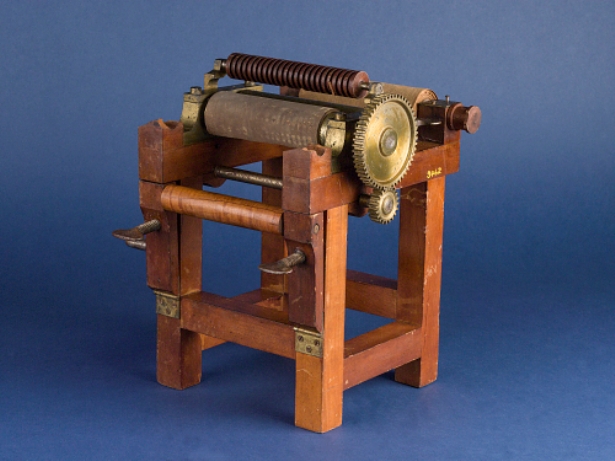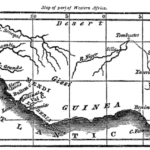
Patent Model for the Manufacture of Rubber Fabrics, Charles Goodyear, 1844 – National Museum of American History, Kenneth E. Behring Center
Expansion and Reform (1801–1861)
The early 19th century witnessed America struggling to forge a post-revolutionary identity. Having come off success in its battle for independence, the explosive growth of cotton and slavery in the South facilitated divisive debates about the rights of all men to be free. These debates affected Connecticut slaveholders and abolitionists alike, manifesting themselves in such stories as those of Prudence Crandall and John Brown. Meanwhile, Connecticut slowly established itself as one of America’s most prominent manufacturing states, providing the country with iron, brass, rubber, textiles, clocks, gunpowder, and armaments. Facilitating the growth of these industries was a renewed focus on transportation infrastructure that brought about the construction of new roads and ambitious projects such as the Farmington and Windsor Locks canals.
Featured
A Different Look at the Amistad Trial: The Teenager Who Helped Save the Mende Captives
James Benajmin Covey, a former slave, was only 14 years old when asked to serve in one of the most publicized trials in American history. …[more]





